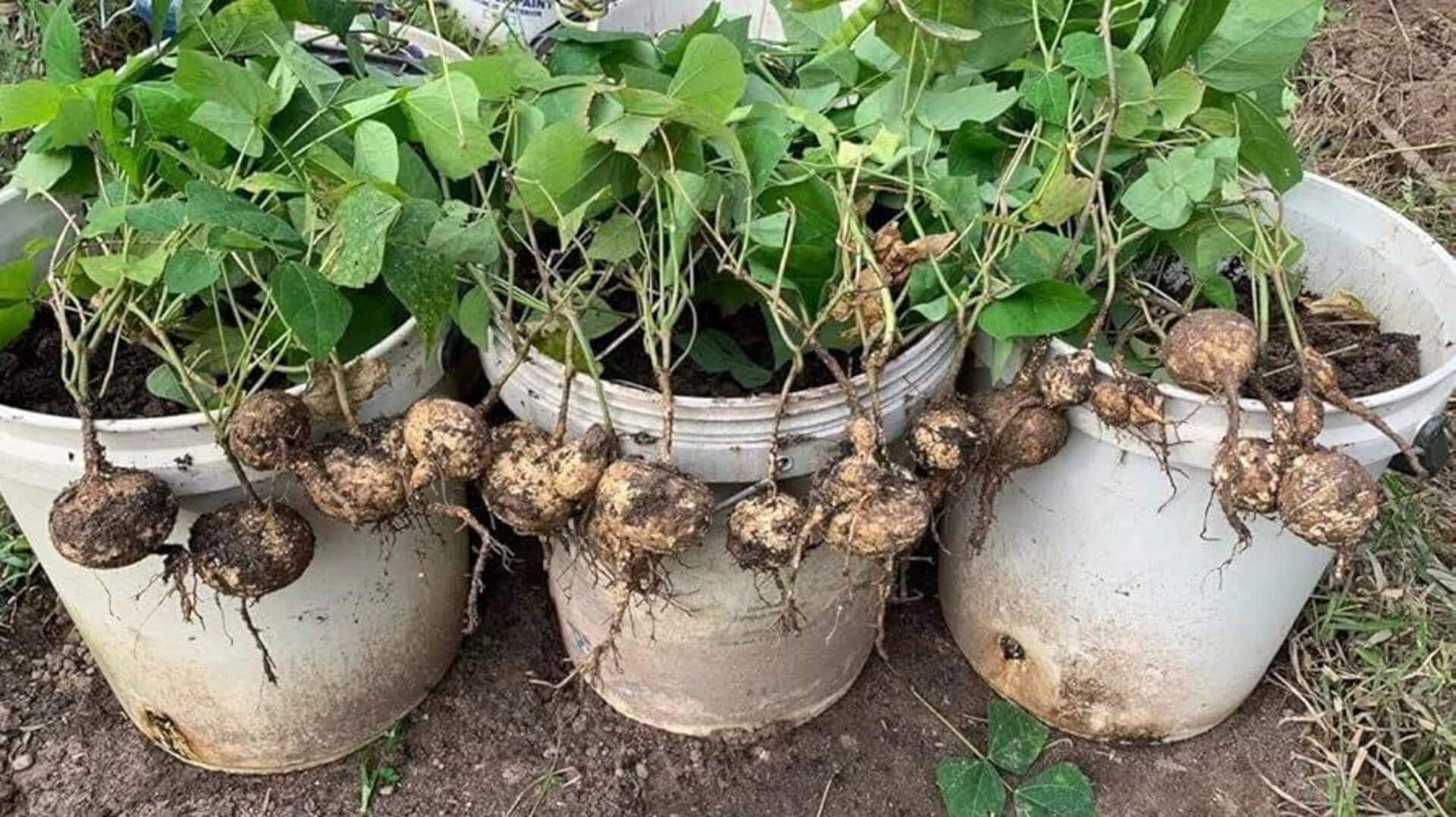
How to grow jicama at home
What's the story
Growing jicama at home can be rewarding, giving you a fresh supply of the crunchy root vegetable. Jicama is known for its crisp texture and slightly sweet flavor, which makes it a versatile addition to many dishes. Cultivating the same in your garden requires knowing about its growth needs and providing the right conditions. Here's how you can ensure successful jicama cultivation.
Tip 1
Choosing the right soil
Jicama grows best in well-drained soil with a pH level of six to 7.5. Opt for sandy or loamy soil that drains well, as waterlogged soil can affect growth. Incorporating organic matter such as compost can enhance the soil's fertility and structure, ensuring healthy root growth.
Tip 2
Planting time and method
The ideal time to plant jicama is after the last frost when the temperatures are consistently warm. Sow seeds directly into the ground at about one inch deep and space them roughly 12 inches apart in three-foot spaced rows. This spacing provides them with enough room to expand into tubers.
Tip 3
Watering requirements
As jicama is a water-loving plant, consistent watering is essential, especially during dry weather. Ideally, you should aim for about one inch of water per week, either through natural rainfall or your own efforts to irrigate. However, be careful not to overwater, as the roots may rot. Make sure your garden has efficient drainage to prevent water from pooling and destroying the roots.
Tip 4
Pest management strategies
Common pests affecting jicama include aphids and beetles. They can damage leaves and stems if not controlled promptly. Regularly inspect plants for signs of infestation such as holes or discolored leaves; use natural remedies like neem oil or insecticidal soap if necessary, while maintaining beneficial insects like ladybugs in your garden ecosystem.